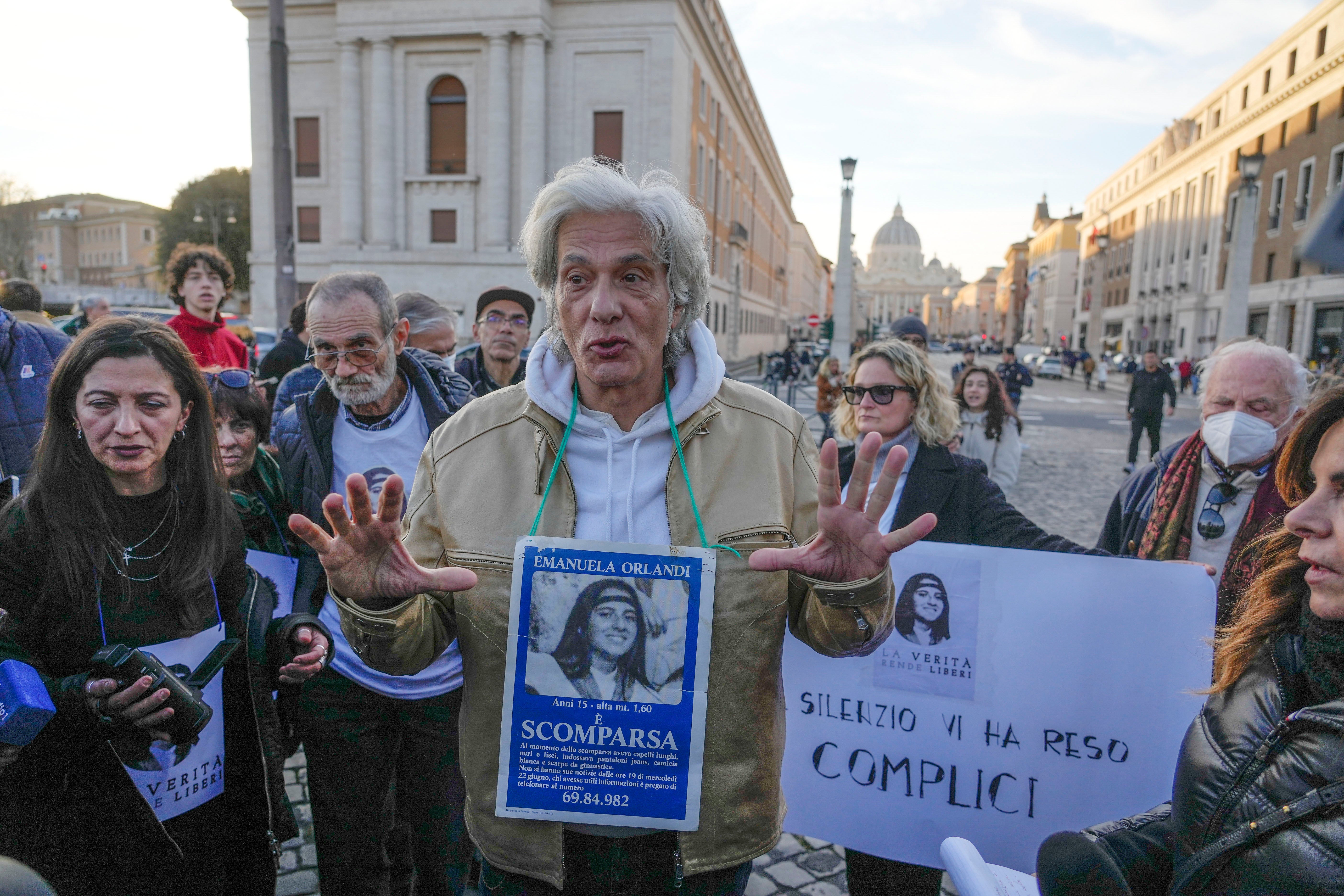Papal official rejects new claims in 'Vatican Girl' mystery
The Vatican is pushing back hard against insinuations against St. John Paul II that were aired following the reopening of an investigation into the 1983 disappearance of the daughter of a Vatican employee

Your support helps us to tell the story
From reproductive rights to climate change to Big Tech, The Independent is on the ground when the story is developing. Whether it's investigating the financials of Elon Musk's pro-Trump PAC or producing our latest documentary, 'The A Word', which shines a light on the American women fighting for reproductive rights, we know how important it is to parse out the facts from the messaging.
At such a critical moment in US history, we need reporters on the ground. Your donation allows us to keep sending journalists to speak to both sides of the story.
The Independent is trusted by Americans across the entire political spectrum. And unlike many other quality news outlets, we choose not to lock Americans out of our reporting and analysis with paywalls. We believe quality journalism should be available to everyone, paid for by those who can afford it.
Your support makes all the difference.The Vatican pushed back hard Friday at “slanderous” insinuations against St. John Paul II that were aired following the reopening of an investigation into the 1983 disappearance of the teenage daughter of a Vatican employee.
The kerfuffle erupted after Emanuela Orlandi’s brother, Pietro, spent eight hours meeting Tuesday with Vatican prosecutors, who earlier this year reopened the dormant investigation into Emanuela’s disappearance. The Vatican probe has coincided with the recent decision by Italy’s parliament to open a parliamentary commission of inquest into the case, giving the Orlandi family hope that the truth might finally emerge.
Emanuela Orlandi, 15, vanished June 22, 1983, after leaving her family’s Vatican City apartment to go to a music lesson in Rome. Her father was a lay employee of the Holy See.
Her disappearance has been one of the Vatican’s enduring mysteries, and over the years has been linked to everything from the plot to kill John Paul, a financial scandal involving the Vatican bank and Rome’s criminal underworld.
The recent four-part Netflix documentary “Vatican Girl” explored those scenarios and also provided new testimony from a friend who said Emanuela had told her a week before she disappeared that a high-ranking Vatican cleric had made sexual advances toward her.
Pietro Orlandi has long insisted the Vatican knows more than it has said and has welcomed the reopening of the probe and promises by Vatican prosecutors that they have been given carte blanche to investigate “without reservations” to find the truth.
During his Tuesday interrogation, Pietro Orlandi provided Vatican prosecutors with an audiotape from a purported Roman mobster insinuating that John Paul would go out looking for underage girls to molest. He played part of the recording during an appearance after his testimony on Italy’s La7 network.
The Vatican’s editorial director, Andrea Tornielli, blasted the recording and Orlandi’s airing of it on national television as slanderous and noted that the insinuation was accompanied by “no evidence, clues, testimonies or corroboration.”
“It is sacrosanct that there be a 360-degree investigation to seek the truth about Emanuela’s disappearance,” Tornielli wrote in the Vatican newspaper L’Osservatore Romano.
“But no one deserves to be vilified in this way, without even a shred of a clue, on the basis of the ‘rumors’ of some unknown figure in the criminal underworld or some sleazy anonymous comment produced on live TV.”
John Paul’s longtime secretary, Cardinal Stanislaw Dziwisz, also criticized the insinuations against John Paul as “unreal, false and laughable if they weren’t tragic and even criminal.” He said he understood the pain of the Orlandi family and hoped for the truth to finally come out, but defended John Paul and denied he ever tried to cover up the Orlandi case.
Pietro Orlandi’s lawyer, Laura Sgro, insisted her client wasn’t accusing anyone and blamed a manipulation of his comments for fueling the dispute.